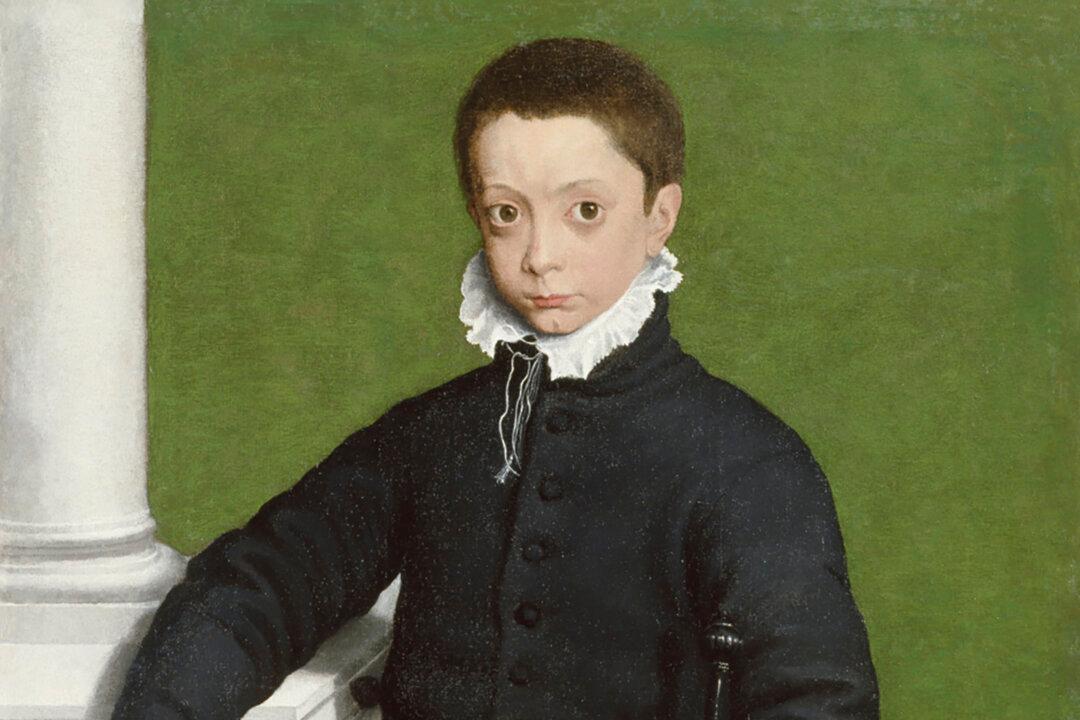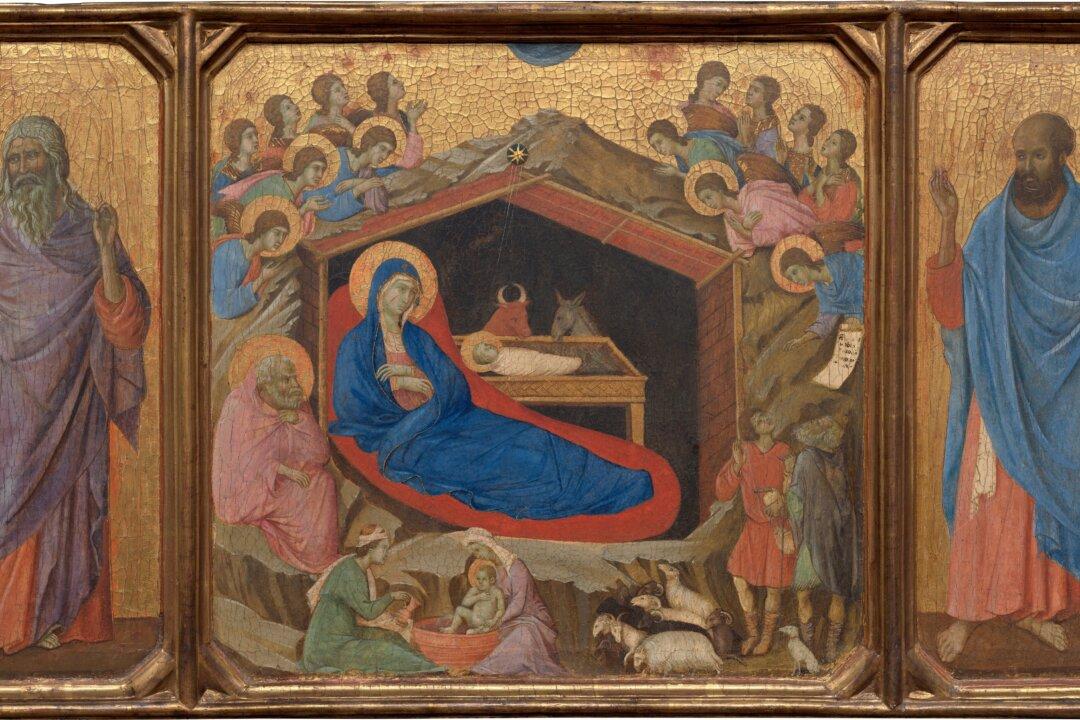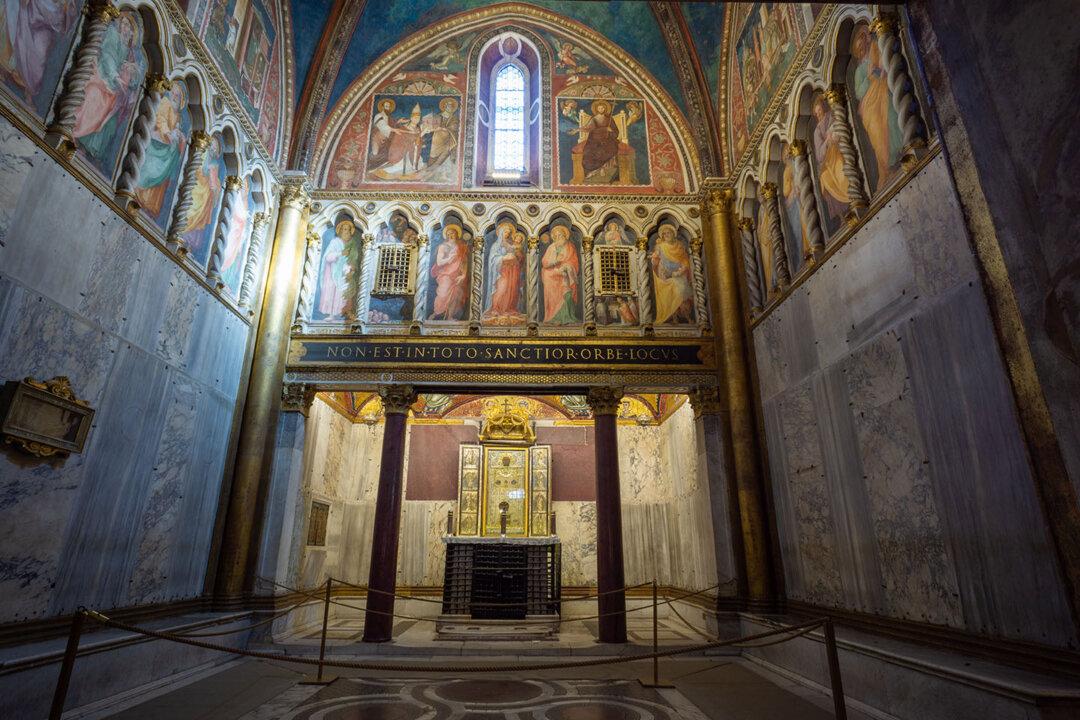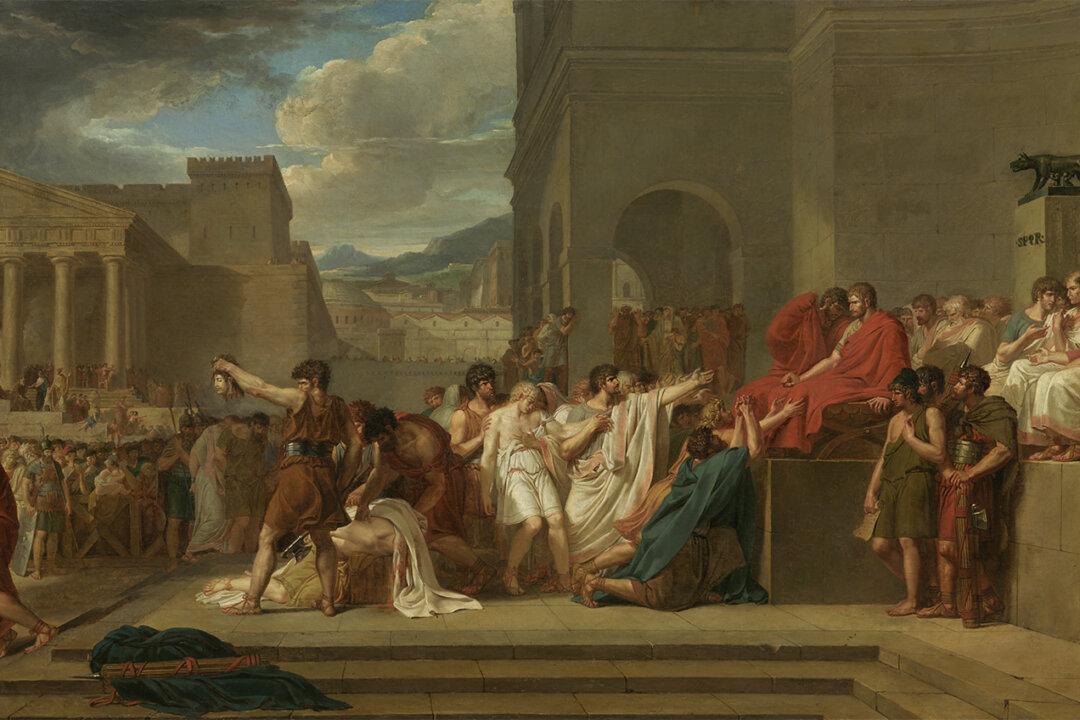A sensitive portrait of a dignified boy graces the galleries of the Walters Art Museum in Baltimore, Maryland.
Depicted in full length, the boy stands straight, with one arm resting gently on a stately white column decorated with marble inlays. Other than the fine lace that peeks out at the collar and the cuffs, he is clad entirely in a black satin fabric, fashionable in Italian Renaissance courts. The gloves in his hand, the ring on his pinky, and the shiny metallic sword hanging around his waist signify his aristocratic status and a lifestyle defined by martial virtue and the pleasure of hunting, which is further reinforced by the faithful dog sleeping at his feet.





